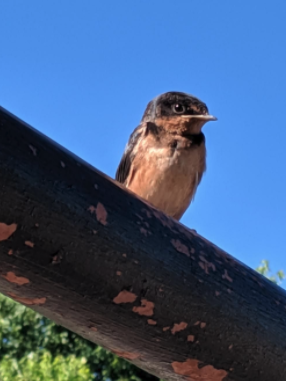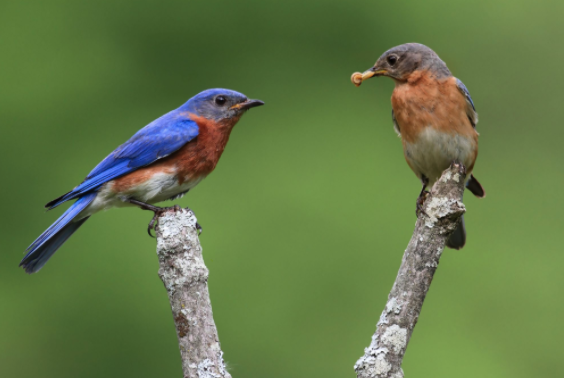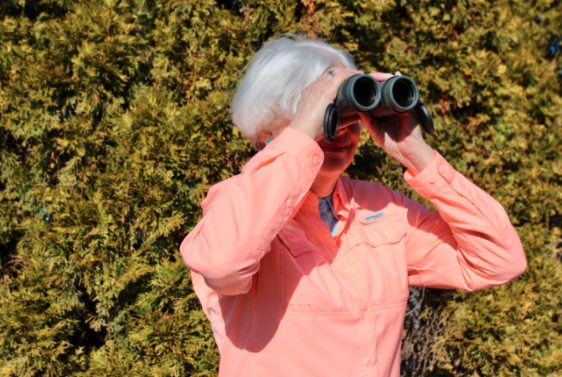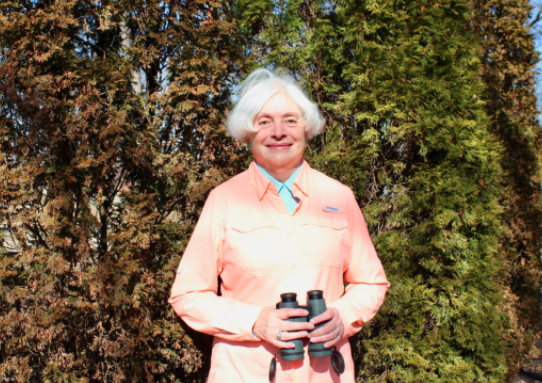Local Parks Offer Abundant Opportunities for Bird Watching
Writer / Jessica Able
Photography Provided
 As a child, Patrice Pittman would often rise before dawn on Saturdays in the summer to accompany her mother to spot birds along the Lake Erie shoreline. Though she was not enthusiastic about the 5:30 a.m. wake-up call, she was more than happy to tag along with her mother’s bird watching club along the beach.
As a child, Patrice Pittman would often rise before dawn on Saturdays in the summer to accompany her mother to spot birds along the Lake Erie shoreline. Though she was not enthusiastic about the 5:30 a.m. wake-up call, she was more than happy to tag along with her mother’s bird watching club along the beach.
Throughout her life she maintained her love of nature and bird watching. While pursuing a career as a teacher, Pittman became more serious about learning about birds and their habits. In 2012, she attended a field trip organized by the Beckham Bird Club in Louisville.
“I remember it being a cold morning and I wasn’t dressed for the weather,” Pittman says.
By the end of the day, she was hooked.
Pittman began going on more field trips in and around Jefferson County, including places she had never visited before, and attending meetings where she heard from experienced birders and other nature experts.
One of the parks she became acquainted with was E.P. Tom Sawyer State Park in eastern Jefferson County. She, like many others, had heard of Sawyer Park in the context of sports and recreational, but she was amazed at the sheer size and scope of its wooded areas.
“I was amazed at how big it was, and the diversity of habitats,” she says.
E.P. Tom Sawyer State Park is situated on 539 acres of rolling fields and woodlands, on what was once farmland.
In the beginning, Pittman told herself she’d be happy to identify 50 species of birds. When that achievement came very quickly, she decided 100 was her next goal. She quickly surpassed that number and is still counting. The total number of bird species she saw and heard at Tom Sawyer Park in 2018 and 2019 is 161.
As Pittman’s experience and love of Tom Sawyer Park grew, so did her interest in the park’s potential for other birders like herself.
“I realized that the wooded area was a diamond in the rough and had great potential,” she says.
In 2017 she spoke with Nick Price, who at the time served as the park’s naturalist and is now park director. She proposed putting together a monthly list of bird species compiled from her hours spent in the park. She now typically goes to the park four times a week, and spends an average of three hours on each excursion. She says every hike is different.
At the end of each month, Pittman prepares a list of species she’s seen or heard.
As Pittman began to spend more and more time birding in the park, she noticed areas in need of some attention. She created a list of ideas for Price, such as pruning branches and vines to open up trails, that she thought would enhance the experience of the wooded areas for park-goers.
“I wanted to give back at least as much as I was getting from the park,” she says.
Building on the species list she compiles for the park, Pittman also began submitting her species lists to Cornell University’s Lab of Ornithology eBird site. The eBird site is an online database of global, real-time bird distribution and abundance.
 In 2019 Pittman was awarded the Beckham Bird Club Award for the most species of birds found in a hot-spot area, based on her birding in 2018.
In 2019 Pittman was awarded the Beckham Bird Club Award for the most species of birds found in a hot-spot area, based on her birding in 2018.
Tom Sawyer Park uses the bird species list to help determine the types of trees, bushes and wildflowers that could be planted in the park to help maintain and increase the bird population.
As her involvement with the park grew, Pittman says she began to appreciate what the park has to offer on a deeper level. As her experience in birding developed, she became familiar with the various nooks and crannies of the park.
In addition to birding and trail maintenance, Pittman also began photographing various spots and wildlife for the park’s Facebook page.
Through her involvement in the park, Pittman has grown from a mere volunteer to an ambassador of sorts. She gives impromptu walking tours for park newcomers and helps hikers back to their cars if they’ve gotten turned around.
“My volunteer time in the park has resulted in my getting to meet many of the park users,” she says. “People come up and ask what birds I had seen that day, or will talk about the birds at their yard feeders and hope I can identify them from their descriptions. I am surprised at how many people have thanked me for helping to take care of the wooded area.”
Park-goers often ask Pittman where they can see a particular species – often bluebirds.
She suggested to Price that the park construct bird boxes that could be placed in areas where a particular species has been spotted. She monitors the boxes, and the park continues to have nesting bluebirds, tree swallows and chickadees. Bluebirds, she says, can be seen year-round in the park, and the best place to spot them is near the front of the recreation building. Tree swallows are often observed swooping low over the soccer fields during the summer.
Pittman recently began assisting a fellow Beckham Bird Club member who is conducting research on the nesting and hunting habits of the great-horned, eastern screech and barred owls. This has resulted in a spotting of a northern saw-whet owl and a barn owl, which she says are rare for Tom Sawyer Park.
“Park walkers might be in for a treat when walking the fitness loop at dusk,” Pittman says. “A great-horned owl or eastern screech owl might be heard, or they’ll have a magical moment if one flies by.”
Casual bird watchers or hikers will have an easier time spotting one of these common park species this winter: red-winged blackbird, northern cardinal,
 American crow, Carolina chickadee, mourning dove, house finch, Canada goose, common grackle, American robin, American goldfinch, red-shouldered hawk, blue jay, northern mockingbird, white-breasted nuthatch, song sparrow, European starling, tufted titmouse, eastern towhee, red-bellied woodpecker, downy woodpecker, black vulture, or turkey vulture.
American crow, Carolina chickadee, mourning dove, house finch, Canada goose, common grackle, American robin, American goldfinch, red-shouldered hawk, blue jay, northern mockingbird, white-breasted nuthatch, song sparrow, European starling, tufted titmouse, eastern towhee, red-bellied woodpecker, downy woodpecker, black vulture, or turkey vulture.
Some of Pittman’s more interesting finds in 2019 were a black-billed cuckoo, grasshopper sparrow, Henslow’s sparrow, and Wilson’s snipe, along with the golden-winged, mourning, Tennessee and Wilson’s warblers. She observed 32 of a possible 36 species of warblers in the park in 2019.
“The sounds of the wood thrush, warbling vireo, yellow-billed cuckoo, ovenbird and woodcock are especially beautiful to hear,” she says.
A favorite of Pittman’s to spot is the Caroline wren, which she says is classy looking and has many clear, loud songs. Another one of her favorites is the belted kingfisher, which has a rattling sound. These can be seen or heard at the marsh in the wetlands area, as well as Goose Creek by the falls under Lakeland Road. Great blue herons and green herons are sometimes seen in these areas as well.
“Don’t forget to stop, look and listen during your walks and take the time to look up,” she says. “You just might see red-shouldered, red-tailed, Cooper’s and sharp-shinned hawks, or a seasonal broad-winged hawk or northern harrier, or a migrating great egret.”
For those interested in honing their bird-watching skills, Pittman suggests joining a bird club and meeting other like-minded people. Field trips to various locales in Jefferson and surrounding counties are a great way to learn from experienced leaders. All that is needed is a decent pair of binoculars, a bird field guide or a cell phone bird app, and a sense of adventure.






